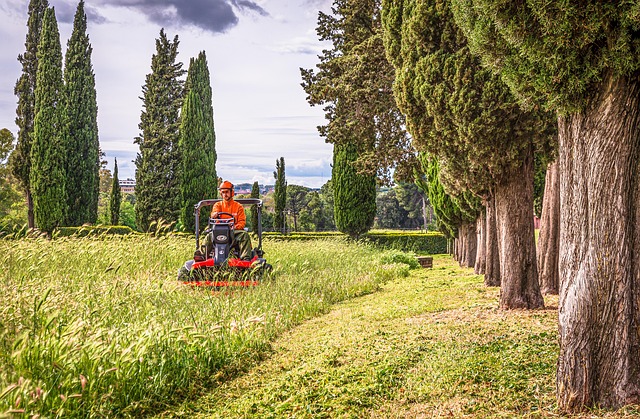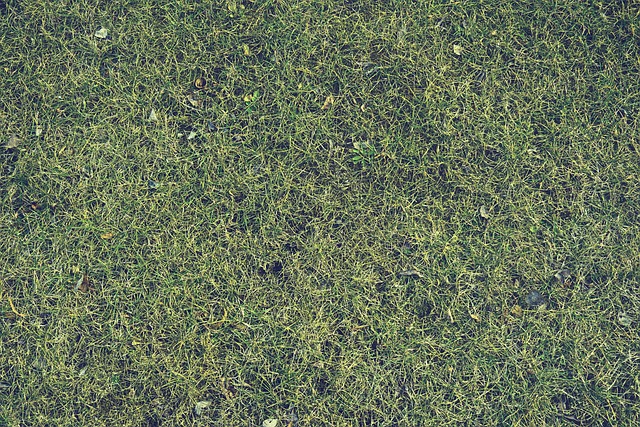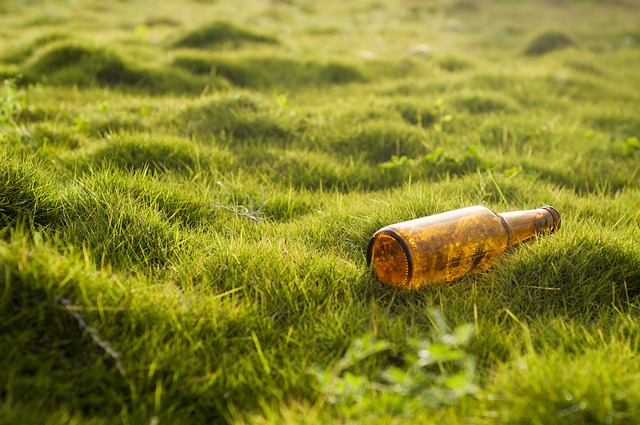Lawn Care and Landscaping is vital for achieving a healthy, attractive outdoor space. Regular mowing (2.5-3 inches) prevents weeds, strengthens root systems, and enhances curb appeal. Proper fertilization with organic or synthetic nutrients promotes lush growth, with application methods tailored to lawn size and species. These practices, along with seasonal care like aeration and reseeding, ensure a vibrant, resilient lawn that serves as your landscape's focal point, potentially increasing property value. Experts use these strategies for optimal results.
In the realm of garden maintenance and beautification, a well-cared-for outdoor space enhances the beauty and value of any property. This comprehensive guide delves into essential lawn care practices that promote robust grass health through regular mowing, strategic fertilization, and efficient watering techniques. Moreover, it explores landscaping design ideas focusing on balanced color palettes, diverse textures, and functional aesthetics. Additionally, seasonal maintenance tasks ensure your garden thrives year-round, from spring cleanup to autumn preparations. Discover expert tips for optimal lawn care and landscaping to transform your outdoor oasis.
- Lawn Care Essentials
- – The importance of regular mowing and its impact on grass health
- – Types of lawn fertilizers and their applications
Lawn Care Essentials

Maintaining a lush, vibrant lawn is an essential part of any landscaping endeavor. To achieve this, regular care and attention are required. Lawn care involves several key practices that ensure your grass stays healthy and attractive. One of the most crucial aspects is mowing; it helps control the height and appearance of the grass while promoting a dense growth pattern. Proper watering techniques are also vital; understanding when and how much to water ensures your lawn gets the necessary hydration without wastage.
Fertilization plays a significant role in enhancing the overall health and vibrancy of your lawn. By providing essential nutrients, it promotes strong root development and robust foliage. Additionally, regular weeding is essential to prevent competitive growth from unwanted plants. These practices, combined with seasonal care adjustments, such as aeration and reseeding, will contribute to a beautiful, well-maintained lawn that becomes the centerpiece of your outdoor space.
– The importance of regular mowing and its impact on grass health

Regular mowing is a fundamental aspect of proper lawn care and landscaping. It promotes grass health by preventing excessive growth, which can lead to weak and thin lawns. Regular trimming also helps to control weeds, as it reduces their ability to compete for nutrients and sunlight. By maintaining a suitable height—typically around 2.5-3 inches (6-7.5 cm) for most grasses—mowing encourages deeper root growth, making the grass more resilient and better able to withstand environmental stresses like drought or heavy traffic.
Moreover, consistent mowing contributes to a lawn’s overall aesthetic appeal. It creates a neat, well-tended appearance that enhances the curb appeal of residential properties and can even increase property values. Proper mowing practices also support a balanced ecosystem by returning clippings to the soil as natural fertilizer, further enriching the landscape and supporting a healthy, vibrant lawn.
– Types of lawn fertilizers and their applications

Lawn care is an essential part of gardening, and proper fertilization plays a crucial role in achieving lush, green lawns. There are various types of lawn fertilizers available, each with unique compositions to cater to different grass types and soil conditions. Organic fertilizers, derived from natural sources like compost, manure, or plant extracts, are popular choices for eco-conscious homeowners. These fertilizers release nutrients slowly, promoting healthy root growth and reducing the risk of burning delicate grasses. On the other hand, synthetic fertilizers offer a quick fix with concentrated nitrogen, phosphorus, and potassium, ensuring rapid greening. They are highly effective for established lawns needing an immediate boost.
When applying fertilizers, it’s vital to follow instructions carefully and consider factors like lawn size, climate, and grass species. Spreading them evenly ensures optimal absorption. For larger areas, using a spreader can be efficient, while hand-spreading is suitable for smaller plots. Regular fertilizing during the growing seasons aids in maintaining a vibrant lawn. Lawn care and landscaping professionals often employ advanced techniques, like spot-application or targeted treatment, to address specific issues, ensuring every blade receives the necessary nutrients for a robust and visually appealing landscape.
Incorporating regular lawn care and landscaping practices is essential for maintaining a healthy, vibrant garden. By understanding the fundamentals, such as the benefits of consistent mowing and the selection of suitable fertilizers, you can significantly enhance your outdoor space’s overall beauty and value. These simple yet effective techniques form the backbone of any successful gardening strategy.
